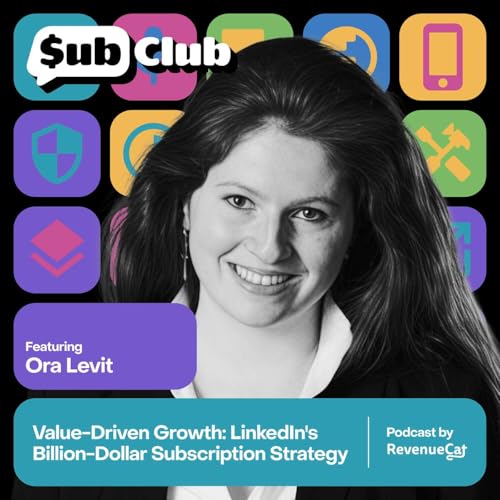On the podcast we talk with Ravi about subscriptions as a force multiplier for consumables, why narratives matter more than metrics in goal-setting, and why you might want to try a longer onboarding, or a shorter one.
📊 Stack the demand curve
Tinder didn’t just offer one price—it built a staircase of value. Low-tier subs, premium upgrades, and microtransactions filled in the gaps of user willingness to pay. The result? More people paid something, and some paid a lot. Don’t pick one price point. Map the whole curve.
🎯 Create value before monetization
The fastest way to expand your TAM? Get users to the “aha” moment faster. Tinder made onboarding nearly instant to tap into a new, younger audience. In contrast, Sesame Care increased conversions with a 25-step flow by increasing user confidence. Friction isn’t the enemy—poor timing is.
💰 Free is a monetization strategy
At Tinder, 85–90% of users never paid. But their presence was the product—fueling demand and justifying spend for the other 10–15%. Don’t underestimate free users. Sometimes, they’re the reason someone else is willing to pay.
🧪 Price is product
Tinder didn’t guess what users would pay. It ran hundreds of localized price tests across SKUs to learn what users valued. Pricing isn’t a spreadsheet exercise—it’s part of the product experience and should be tested like one.
📐 Narrative beats metrics
OKRs fail when they skip the why. Ravi’s NCTs framework, which stands for Narratives, Commitments, Tasks, anchors goals in story and context. If your team is hitting the numbers but drifting on focus, it’s probably time to start with the story—not the spreadsheet.
🪞 Monetization reveals product market fit
Most apps undercharge. A scanner app might seem basic, but if it powers daily workflows, it’s worth real money. Set your price high enough to test willingness, not just conversion. If no one bites, you don’t have a monetization problem—you have a product one.
About Ravi Mehta:
🔥 Former Chief Product Officer at Tinder and product leader at Meta, TripAdvisor, and Microsoft.
📈 Ravi helps companies turn behavioral insights into scalable monetization systems — from multi-tier subscriptions to habit-forming onboarding flows.
🗣 “If you have a product that’s solving an important need for someone, there’s a system around that that fits into the problem you’re solving, and you should think about the value of that system rather than just the price.”
👋 LinkedIn
Follow us on X:
- David Barnard - @drbarnard
- Jacob Eiting - @jeiting
- RevenueCat - @RevenueCat
- SubClub - @SubClubHQ
Episode Highlights:
[0:00] Subscriptions as a force multiplier for consumables
[3:03] Filling the demand curve with tiers and microtransactions
[6:47] Why free-to-play was Tinder’s breakthrough innovation
[10:26] Matching monetization to different user behaviors
[13:09] Creating value for whales without breaking the game
[17:22] Experimenting your way into the perfect pricing model
[20:03] When free, trial, or paid onboarding makes the most sense
[23:47] Why apps are undermonetized and how to fix it
[28:43] Why a longer onboarding boosted conversion 40%
[35:20] How shorter onboarding expanded Tinder’s total market
[43:03] Narratives, commitments, and tasks: a better goal framework
[01:02:49] Growth is easier when you own your audience
 1 時間 29 分
1 時間 29 分 1 時間 6 分
1 時間 6 分 1 時間 4 分
1 時間 4 分 27 分
27 分 1 時間 8 分
1 時間 8 分 49 分
49 分 2025/09/1747 分
2025/09/1747 分 55 分
55 分
